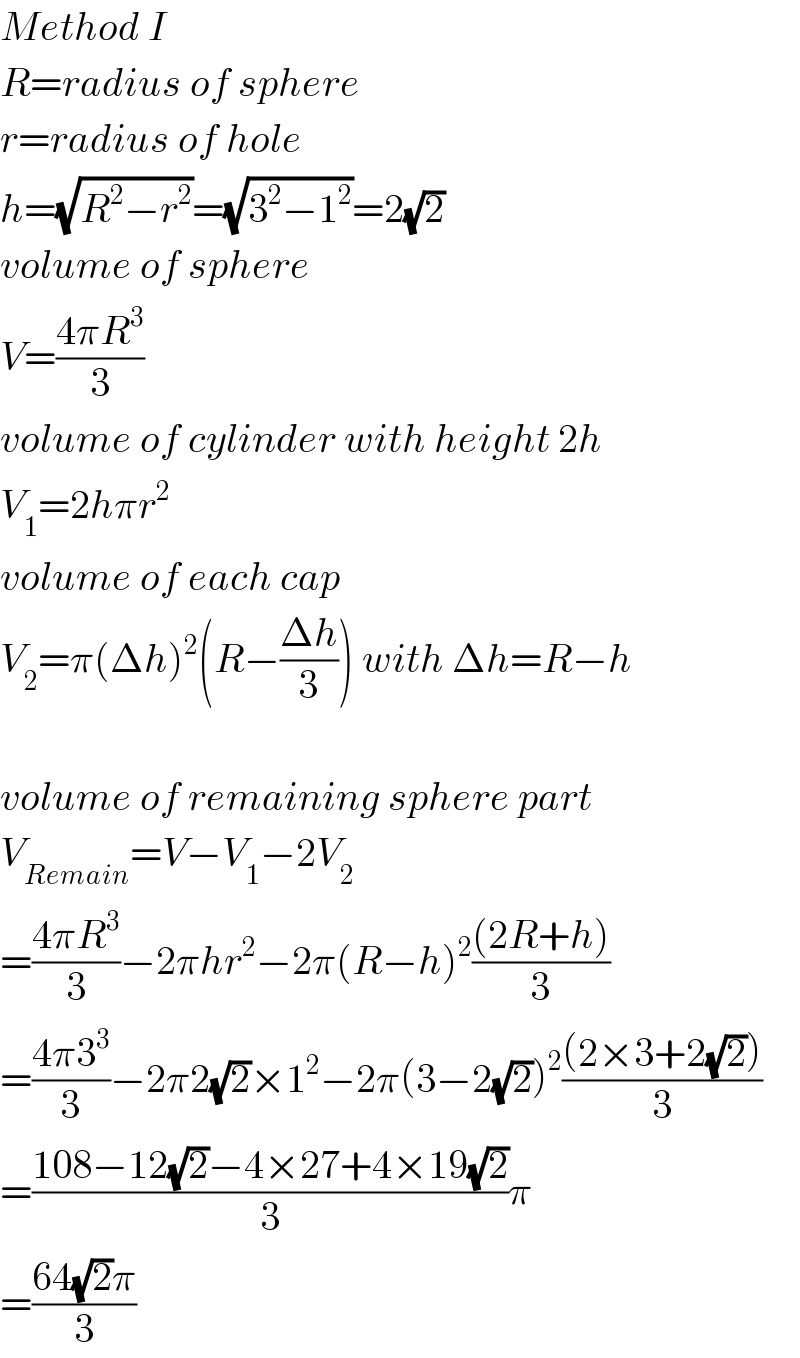
Question and Answers Forum
Question Number 124666 by benjo_mathlover last updated on 05/Dec/20

Commented by ajfour last updated on 05/Dec/20

Commented by ajfour last updated on 05/Dec/20
![cap volume V. V=∫_h ^( R) πr^2 dy r=Rsin θ , y=Rcos θ = ∫_0 ^( α) π(R^2 sin^2 θ)Rsin θdθ sin α=(1/3) , cos α=((2(√2))/3) = πR^3 ∫_((2(√2))/3) ^( 1) (1−t^2 )dt ; t=cos θ = πR^3 (t−(t^3 /3))∣_((2(√2))/3) ^1 =27π[(2/3)−(((2(√2))/3)−((16(√2))/(81)))] =27π[(2/3)−((38(√2))/(81))] remaining volume = (4/3)π(27)−2π(1)^2 (2(√2))−2V =36π−4(√2)π−36π+((76(√2))/3)π V_(remaining) =((64(√2)π)/3) .](Q124676.png)
Commented by benjo_mathlover last updated on 05/Dec/20

Commented by mr W last updated on 05/Dec/20

Answered by mr W last updated on 05/Dec/20

Commented by mr W last updated on 05/Dec/20

Commented by mr W last updated on 05/Dec/20
![Method II r≤x≤R h(x)=(√(R^2 −x^2 )) dV=2h(x)2πx=4πx(√(R^2 −x^2 )) V_(Remain) =∫_r ^R 4πx(√(R^2 −x^2 ))dx =−2π∫_r ^R (√(R^2 −x^2 ))d(R^2 −x^2 ) =((4π)/3)[(R^2 −x^2 )^(3/2) ]_R ^r =((4π(R^2 −r^2 )^(3/2) )/3) =((4π(3^2 −1^2 )^(3/2) )/3) =((64(√2)π)/3)](Q124683.png)
Commented by benjo_mathlover last updated on 05/Dec/20

